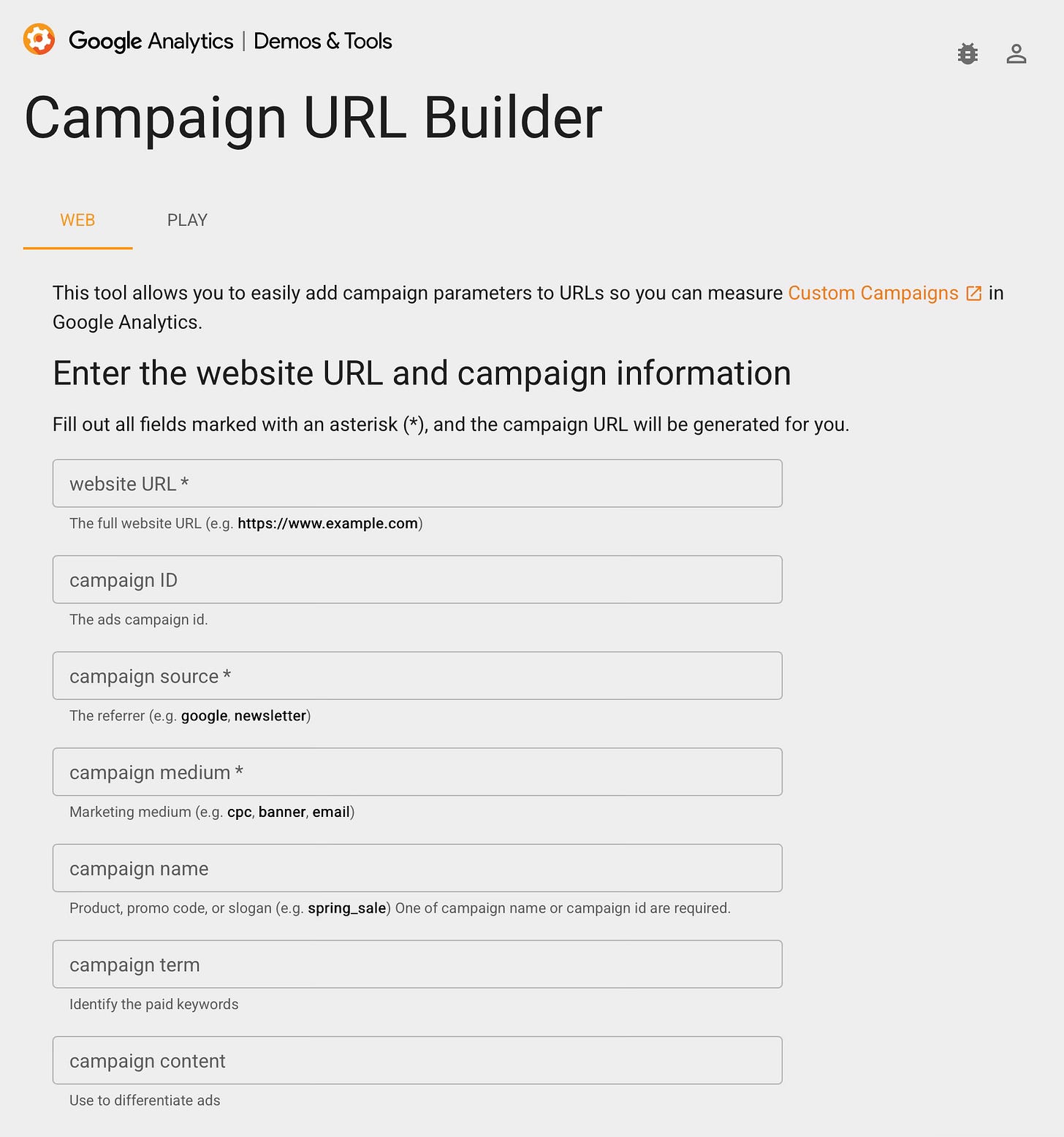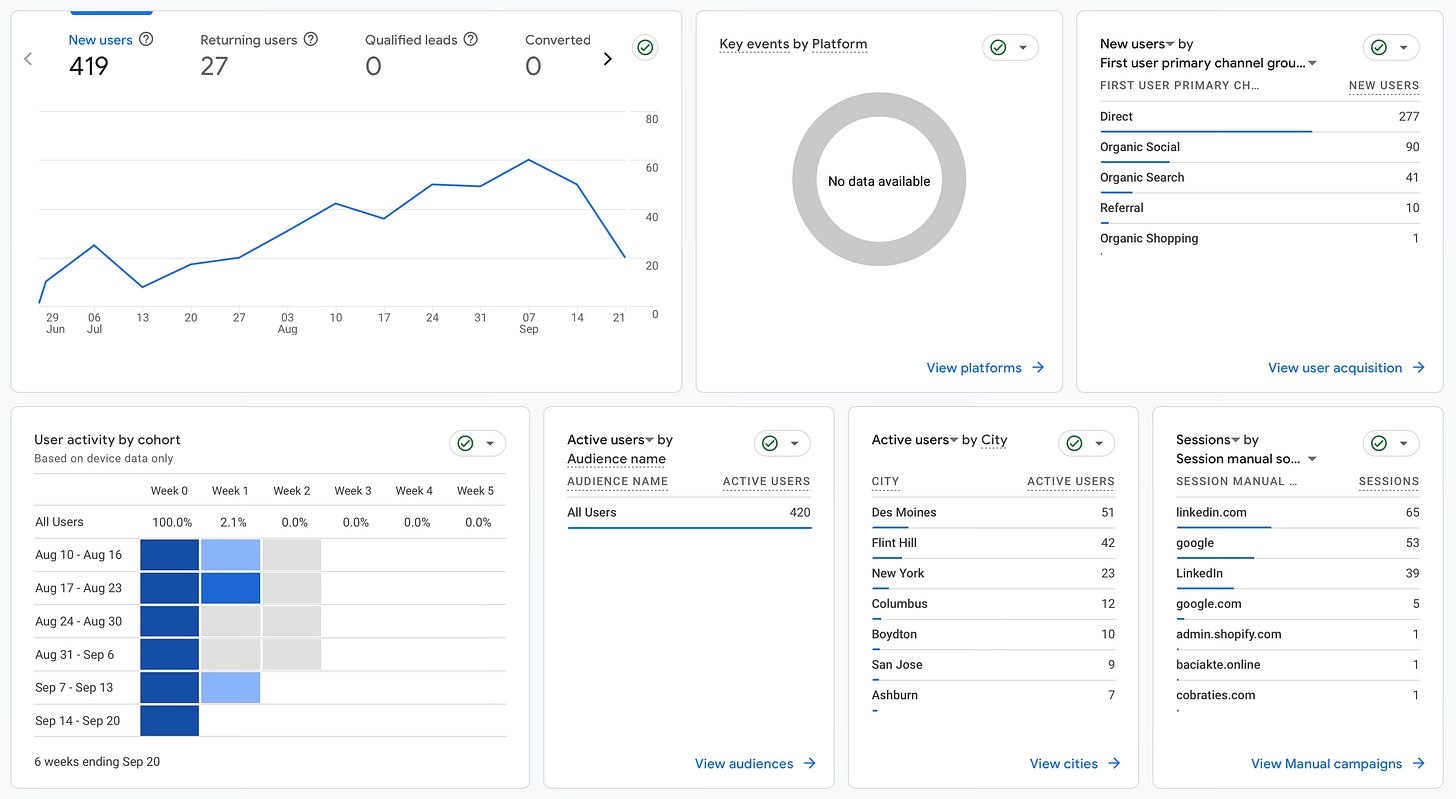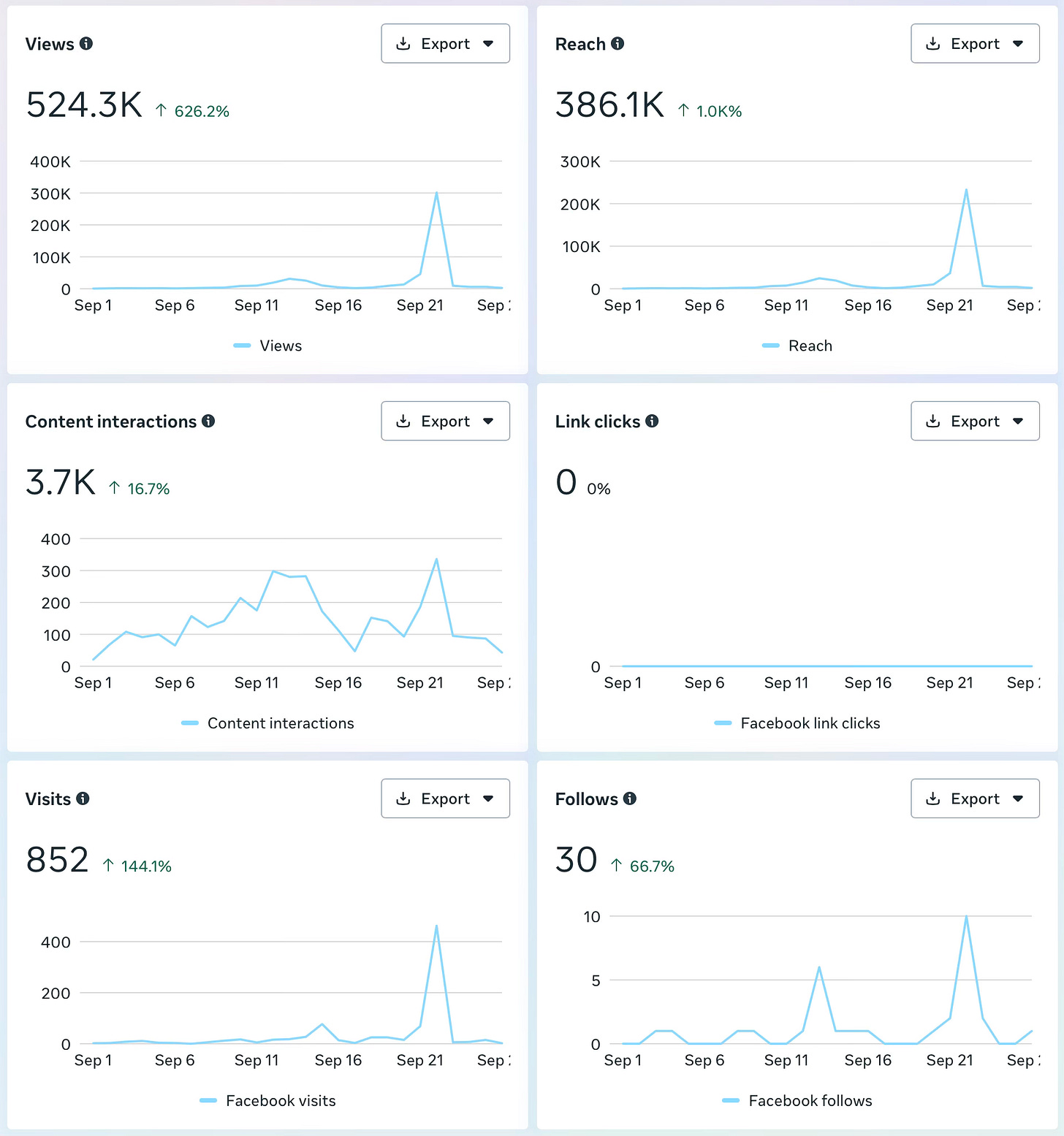Because throwing money at the wall and hoping something sticks isn't a strategy—it's a nightmare
Last week, we talked about stretching your marketing budget like it’s made of vibranium.
However, even the most carefully planned budget means nothing if you can’t tell whether your marketing efforts are actually working. It’s like having Spider-Man’s web shooters but never checking if they’re hitting their target.
When you’re running a creative business (aka wielding your superpower) with limited funds, every dollar counts.
You can’t afford to throw money into the marketing void and cross your fingers. You need to know (with superhero-level precision) which efforts are bringing in clients and which ones are just burning through your hard-earned cash like the Human Torch on a rampage.
Most creative entrepreneurs are flying blind when it comes to their marketing.
They post on Instagram, send the occasional email, maybe run a Facebook ad, but they have no idea which activities are actually moving the needle.
Sound familiar? Don’t worry, we’re about to fix that faster than The Flash can run a lap around Central City.
Why Tracking Your Marketing Feels Like Defusing a Bomb (But You’ve Got to Do It Anyway)
Tracking marketing performance can feel overwhelming, especially when you’re already juggling client work, admin tasks, and trying to maintain some semblance of work-life balance.
But here’s why it’s absolutely crucial for your creative business survival.
First, your budget is limited.
Unlike big corporations with marketing departments and endless resources, you need to squeeze maximum value from every marketing dollar.
When you don’t track what’s working, you’re essentially playing a very expensive guessing game.
Second, your time is precious.
As a creative entrepreneur, you’re probably wearing seventeen different hats on any given day.
You can’t afford to spend hours on marketing activities that aren’t generating results. Tracking helps you identify which efforts deserve your time and which ones you should ditch faster than a villain’s monologue.
Third, your business depends on consistent client acquisition.
Whether you’re a freelance photographer, graphic designer, or consultant, you need a steady stream of clients to keep your creative business thriving.
Understanding which marketing channels bring in quality leads helps you double down on what works and stop wasting energy on what doesn’t.
Decoding KPIs: Your Marketing Dashboard Explained
Key Performance Indicators (KPIs) are like your superhero dashboard. They give you real-time intel on what’s happening in your business. But unlike Tony Stark’s fancy tech, you don’t need a billion-dollar setup to track the metrics that matter.
For creative businesses, the most important KPIs typically include website traffic, lead generation, conversion rates, and customer acquisition cost.
Website traffic tells you how many people are discovering your work online. Lead generation shows how many potential clients are expressing interest in your services (superpower).
Conversion rates reveal how effectively you’re turning interested visitors into paying clients.
And customer acquisition cost helps you understand how much you’re spending to land each new client.
But here’s where it gets tricky:
Not all metrics are created equal.
Vanity metrics like social media followers or email subscribers might make you feel good, but they don’t necessarily translate to revenue.
Focus on metrics that directly correlate with money in your bank account.
A thousand Instagram followers won’t pay your rent, but five solid client inquiries definitely will.
The key is choosing three to five KPIs that align with your business goals and tracking them consistently.
Think of it as your superhero training regimen.
Consistency beats perfection every time.
Why Your Marketing Might Be Falling Flat (Common Culprits Revealed)
Before we dive into tracking methods, let’s address the elephant in the room:
Sometimes marketing isn’t working because of fundamental issues, not tracking problems.
Understanding these common pitfalls can save you from wasting time measuring the wrong things.
One major culprit is unclear messaging.
If potential clients can’t quickly understand what you do or why they should hire you, all the tracking in the world won’t help.
Your marketing materials should clearly communicate your superpower and how it solves their problems.
Another common issue is targeting the wrong audience.
You might be creating amazing content and tracking it perfectly, but if you’re reaching people who can’t afford your services or don’t need what you offer, you won’t see results.
It’s like trying to sell ice to Iceman - technically impressive, but completely unnecessary.
Inconsistency is also a silent killer.
Marketing works best when it’s consistent over time, but many creative entrepreneurs go through cycles of intense marketing followed by complete radio silence.
This stop-and-start approach makes it nearly impossible to build momentum or accurately assess what’s working.
Finally, unrealistic expectations can derail your efforts.
Marketing is more like Captain America’s shield than Thor’s hammer.
It’s about steady protection and consistent results rather than dramatic, lightning-strike moments.
Most successful marketing campaigns build slowly over months, not days.
Mastering UTM Parameters: Your Secret Weapon for Tracking Everything
Google’s UTM (Urchin Tracking Module) parameters are like having X-ray vision for your marketing efforts.
These simple code snippets help you track exactly where your website visitors are coming from, giving you unprecedented insight into which marketing channels are actually working.
UTM parameters are tiny pieces of code you add to your URLs that help Google Analytics (and other tracking tools) understand the source of your traffic.
When someone clicks a link with UTM parameters, you can see not just that they visited your website, but exactly which email, social media post, or ad brought them there.
The basic UTM parameters include source (where the traffic came from), medium (the type of marketing), campaign (the specific campaign name), and content (which specific link or creative). For example, if you’re promoting your photography services through an Instagram post, your UTM-tagged link might look something like this:
yourwebsite.com?utm_source=instagram&utm_medium=social&utm_campaign=holiday_portraits&utm_content=carousel_post.
The beauty of UTM parameters is that you can use them for almost everything: email newsletters, social media posts, guest blog articles, online directory listings, and even QR codes on your business cards.
Once you start using them consistently, you’ll have a crystal-clear picture of which marketing efforts are driving traffic, leads, and sales.
Google’s Campaign URL Builder makes creating these links incredibly easy. No coding knowledge required. Just plug in your information, and it generates the tagged URL for you.
Tracking Different Marketing Channels Like a Pro
Each marketing channel requires slightly different tracking approaches, but the principles remain the same: you want to measure reach, engagement, and conversion at every stage of your marketing funnel.
For social media tracking, focus on metrics that matter for your business goals.
If you’re trying to drive website traffic, track click-through rates and UTM-tagged link performance. If you’re building brand awareness, monitor reach and engagement rates.
Most social platforms provide built-in analytics, but third-party tools like Buffer or Hootsuite can give you more comprehensive insights across multiple platforms.
Email marketing is often the easiest channel to track because most email platforms provide detailed analytics out of the box. Monitor open rates, click-through rates, and conversion rates.
But don’t stop there. Use UTM parameters in your email links to track what happens after people click through to your website.
Website tracking through Google Analytics is essential for understanding the full customer journey.
Set up goals for important actions like contact form submissions, phone calls, or purchase completions. Use Google Search Console to understand which keywords are bringing people to your site organically.
For paid advertising, platforms like Facebook Ads Manager and Google Ads provide detailed performance metrics. Track cost per click, conversion rates, and return on ad spend.
But remember to also use UTM parameters to see what happens after people click your ads.
Analyzing Your Data Without Getting Lost in the Numbers
Raw data is like having superpowers without knowing how to use them—potentially powerful but ultimately useless without proper analysis.
The key is developing a regular review process that turns numbers into actionable insights.
Start by establishing a weekly or monthly review routine.
Look for patterns in your data: which days generate the most website traffic, which types of content get the most engagement, which marketing channels drive the highest-quality leads. Don’t just collect data, actively look for trends and opportunities.
Pay special attention to the customer journey.
How do people typically discover your business?
What’s the average number of touchpoints before someone becomes a client?
Understanding this journey helps you optimize each stage and identify potential bottlenecks.
Compare your performance over time rather than obsessing over daily fluctuations. Marketing data can be noisy, with natural ups and downs that don’t necessarily indicate problems. Look for longer-term trends and seasonal patterns that can inform your strategy.
Most importantly, connect your marketing metrics to business outcomes.
A 50% increase in website traffic means nothing if it doesn’t lead to more inquiries or sales.
Always tie your marketing performance back to revenue and business growth.
Budget-Friendly Tools for Every Superhero’s Arsenal
You don’t need a Wayne Industries budget to track your marketing effectively. Here are options for every financial situation, from completely free to premium solutions that won’t break the bank.
Free Options: Google Analytics and Google Search Console provide incredibly powerful tracking capabilities at no cost. Social media platforms offer built-in analytics. Canva has basic social media scheduling and analytics features. Google My Business provides local search insights for location-based businesses.
Low-Cost Solutions ($10-50/month): Tools like Mailchimp or ConvertKit offer email marketing with detailed analytics. Buffer or Later provide social media scheduling and basic analytics across multiple platforms. Hotjar offers website heatmaps and user behavior insights. Google Ads provides affordable advertising with detailed performance tracking.
Premium Options ($50+/month): HubSpot offers comprehensive marketing automation and analytics. SEMrush provides advanced SEO and competitor analysis. Facebook Business Manager gives you detailed advertising analytics and audience insights. These tools are worth considering once your business is generating consistent revenue and you need more sophisticated tracking capabilities.
Remember, the best tracking system is the one you’ll actually use consistently (I use Google Analytics most).
Start simple, get comfortable with basic metrics, then gradually add more sophisticated tools as your business grows.
Your Next Mission: Transform Your Marketing from Guesswork to Science
Tracking your marketing doesn’t have to feel like solving quantum physics equations.
Start small, be consistent, and focus on metrics that directly impact your bottom line.
Your future self (and your bank account) will thank you for taking the time to understand what’s actually working in your marketing efforts.
This week, pick one marketing channel you’re currently using and set up proper tracking.
Create UTM parameters for your next social media post, dive into your email analytics, or finally set up those Google Analytics goals you’ve been putting off.
Small steps lead to big breakthroughs.
Just ask any superhero who started with basic training before saving the world.



